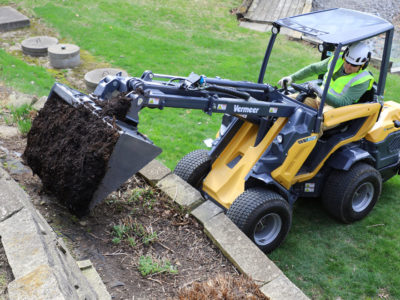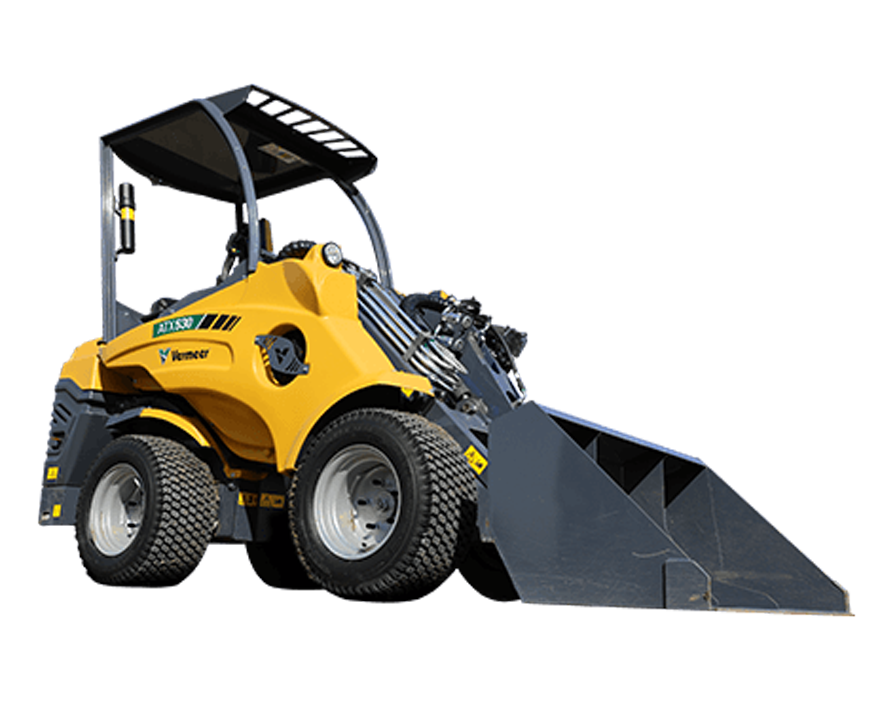What makes compact articulated loaders so versatile is the integration of the material handling abilities of larger loaders and the telescoping boom design of telehandlers. Different brands have their own unique design to integrating these features into their compact articulated loader lines. Vermeer compact articulated loaders, have a durable double-H style boom, the proven design used on wheel loaders for decades. Other compact articulated loader manufacturers use a single-arm boom design.
So, what’s the difference, and why should you care?
According to Cole Chesnut, application specialist at Vermeer, a compact articulating loader’s boom design can impact its overall performance in the future. “Boom control on articulated loaders should feel tight and precise,” said Chesnut. “However, as the hours of usage increase, everyday wear may have more of an impact on single-arm boom units than those with the double-H style boom because the dual-arm design helps protect from bending and twisting.”
While the bending and twisting more commonly associated with loaders using a single-boom arm won’t likely result in issues through the first few years of operations, it should be something you think about if you intend to operate a compact articulated loader for several years. “As boom components wear overtime, joints and wear plates can become fatigued, which may impact boom control and require more handling by the operator,” explained Chesnut. “This type of wear can be viewed as just part of the natural lifecycle of an aging loader. But, as with large wheel loaders that use a double-H style boom to handle heavy, bulky material like aggregates, this rigid boom design provides precise boom and attachment control.”
Why doesn’t everyone just use the double-H style boom, then?
Several compact articulated loader manufacturers use a single-arm boom because they believe it can offer operators a better view of the attachment than a double-H style boom. However, Chesnut says sales features can vary from model to model depending on whether the loader uses a center-mounted single boom design or one mounted on the side. “Often, there is very little change in visibility from an articulated loader with a double-H style boom and one with a single arm. Anyone concerned about getting the best visibility from the controls of the loader should do their due diligence and compare the visibility of both designs before deciding which is right for them.”
Keep in mind, though, that many single-arm boom compact articulated loader do come with extra weight compared to a similar-sized double-H style boom because heavier tubing is required to prevent twisting. Depending on the application and material being handled, extra machine weight may or may not be an advantage. A heavier machine may result in a slightly higher-rated operating capacity. However, a heavier machine can result in high turf damage if you’re doing landscaping or other applications that require a light footprint.
There are also fewer points to grease on a single-arm boom than a double-H style boom. But, if you’re greasing, hitting an extra couple of grease points usually doesn’t require much more effort.
So, which compact articulating boom style should you choose?
Adding any new machine to your equipment fleet shouldn’t be a decision taken lightly. The double-H style boom design on Vermeer compact articulated loaders (ATXs) provides structural durability to the main working components and helps protect them from bending and twisting.
Furthermore, Vermeer compact articulated loaders are backed by the Vermeer dealer network — something other category manufacturers don’t offer.
So, if you’re a landscaper, tree care professional, compost/mulch producer, nursery or a general contractor looking to add a compact articulated loader, contact your local Vermeer dealer today.
MultiOne SRL Corporation reserves the right to make changes in engineering, design and specifications; add improvements; or discontinue manufacturing at any time without notice or obligation. Equipment shown is for illustrative purposes only and may display optional accessories or components specific to their global region. Please contact your local Vermeer dealer for more information on machine specifications. Vermeer and the Vermeer logo are trademarks of Vermeer Manufacturing Company in the U.S. and/or other countries. © 2021 Vermeer Corporation. All Rights Reserved.

